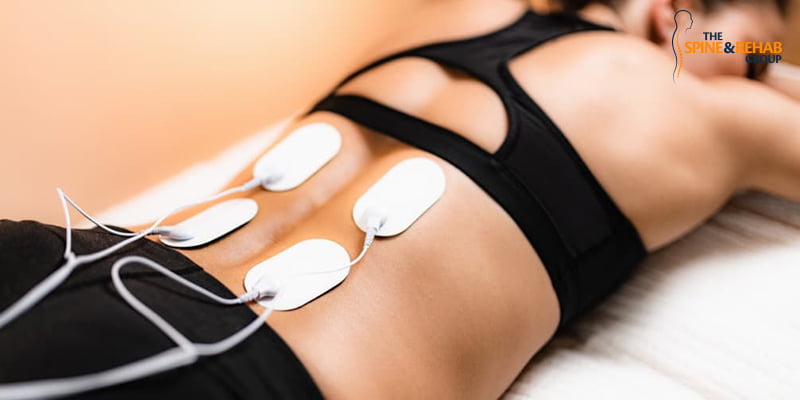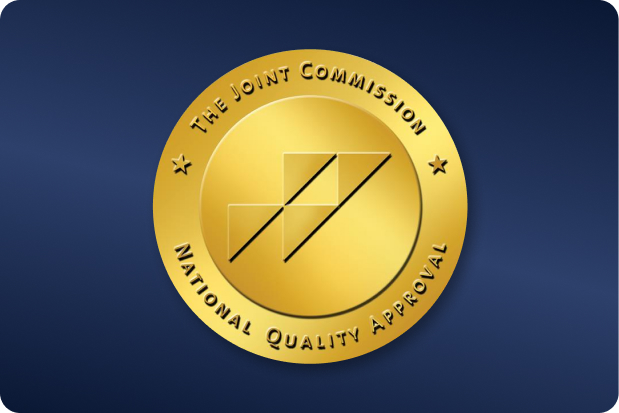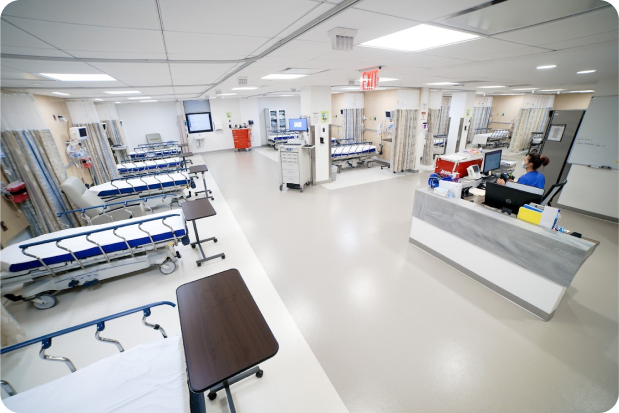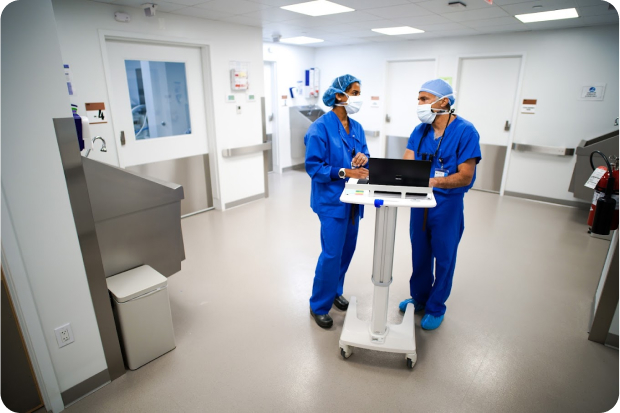 OUR LOCATIONS
Call to book 201.523.9590
OUR LOCATIONS
Call to book 201.523.9590
 OUR LOCATIONS
Call to book 201.523.9590
OUR LOCATIONS
Call to book 201.523.9590

Sciatica is a condition wherein pain radiates along the position of the sciatic nerve that comes from the lower back, hips, glutes, and down both legs. In most circumstances, it’s present on only one side of the body. Thankfully, modern solutions have been discovered to alleviate sciatica pain, and one of those that promise this is the TENS treatment.
So can you use a TENS unit for sciatica pain? Yes, you can use the TENS treatment for sciatica pain, as it’s an effective and non-addictive pain relief method suitable for different kinds of body pain, including sciatica. But for best results, consult with your provider to find the treatment for your sciatica pain.
Although more clinical trials are needed to ascertain the efficacy of the TENS Unit for sciatica, patients who have tried it have claimed promising results. It helps with sciatic pain by treating it like any other pain in the body, blocking the pain signals, and assisting the body in releasing “feel-good” hormones.
Transcutaneous electrical nerve stimulation (TENS) uses electric currents to relieve pain. A battery-operated device called a TENS unit delivers the electric current to the body by attaching adhesive pads called electrodes on the skin where the pain is occurring.
There are several uses of the TENS unit. It alleviates pain and reduces muscle spasms caused by arthritis, knee pain, and sports injuries. It also helps with pelvic pain caused by dysmenorrhea or endometriosis. Sometimes, it’s also used to relieve pain during active labor.
The function of TENS is to send a controlled electric current that stimulates nerve cells, blocking the transmission of pain signals in the body. When administered, factors are adjusted to accommodate the appropriate relief of a specific pain:
The intensity dials the electrical stimulation. Frequency is the number of electrical pulses of energy per second. For frequency, there are 2 types: low frequency (referring to 1 to 20 cycles per second) and high frequency (referring to 80 to 120 cycles per second). Lastly, the duration is the number of electricity that enters the skin for each pulse.
TENS therapy doesn’t heal chronic pain. However, it is an overall safe treatment that allows short-term pain relief when used. It’s also coupled with physical therapy to help relieve pain.
The usage of TENS in sciatica is the same for any pain in the body. TENS units are over-the-counter devices for patients with chronic pain to alleviate the pain they are experiencing.
The sciatic nerve is long, and when pinched or compressed, it affects a big area in the lower back, hips, and legs. To optimize the usage of a TENS unit for the pain management of sciatica, you have to position the electrodes properly on specific spots in your lower back to soothe the pain.
To begin the TENS therapy, you adjust the device to the appropriate levels until there’s pain relief. The device sends light electrical shocks to the skin to stimulate the nerves. During a session, it’s a light tingling or pleasant sensation along the affected area.
The TENS unit has two ways to help sciatica pain. It obstructs pain signals from traversing the nerves to the brain, replacing them with a tingling sensation. It also helps relieve pain and reduce stress.

A TENS unit uses electrical impulses through an electrode pad on the skin and nerve fibers that helps with pain relief. While on TENS therapy, it’s essential to use 2 electrode pads as one will not do anything to help with sciatica pain relief. The position of the pads on specific parts of the lower back and leg can easily target sciatica pain.
The sciatic nerve encompasses the lower body from the lower back to the legs. The pain of sciatica can therefore be felt from anywhere the sciatic nerves run through. Fortunately, the TENS unit has pads that can be put anywhere in the body.
The placement of the TENS unit’s pads for sciatica solely depends on the patient’s preference. The adhesive pads can be placed anywhere on the lower body, which the patients can experiment with.
Most of the time, two electrode pads are placed on either side of the spine at different vertebral levels. It can also be placed near the lumbar vertebrae and upper thighs. The patient can adjust the TENS device’s settings to control the program with the available configurations. It is recommended to start with two electrode pads to explore the areas and settings that give them the best relief.
A purchased TENS unit will have specific instructions inside the box. Before using the device, make sure the machine is switched off. Attached is the electrode patch on the skin near the painful area (at least 1 inch from the affected area).
Once the pads are in the correct places, turn on the machine. A tingling sensation that passes through the skin should be felt. While functioning, adjust the dials of the device according to your preferred electrical impulses’ strength.
Starting from the low setting, work your way up to a configuration that delivers a strong but comfortable sensation. If the feeling is painful or uncomfortable, reduce the setting until it feels right. TENS therapy can be done 4 times daily, where each user should only last for at least 30 to 45 minutes. After the session, turn off the machine and remove the pads from your skin.
There are low risks of and possible side effects of using a TENS unit. Having serious side effects is uncommon. Nonetheless, there are guidelines in using a TENS unit for your safety.
The small size and light weight of TENS machines make it so convenient that you can put them in pockets, clip them to a belt, or hold them while working or on the move. However, there should be limitations on when they should be used.
Always follow directions on how the device should properly be used. Some precautions are:
TENS units are safe for the majority who use them for relief, and no side effects are usually experienced. But some users might find it uncomfortable due to the buzzing, tingling, or prickling sensation caused by the electrical impulses.
Additionally, some people are reported to be allergic to the electrode pads that start to experience redness and irritation in the area, so it’s recommended to use hypoallergenic pads. Never place the pads over some body parts, such as the neck and temples, as it can lower blood pressure and cause spasms, and the eyes can increase the pressure that will cause an injury.
Leaving the machine for too long can burn the area where the pads are placed. People who use TENS at the same frequency and intensity daily develop resistance to the treatment; therefore, it’s recommended to alternate between low and high frequency in each session.
Before starting TENS therapy, ask your doctor or physical therapist if you can have this therapy done. TENS isn’t safe to use if you have a pacemaker or an electrical or metal implant in your body. It’s not safe to use if you have the possibility of being pregnant or are pregnant. Also, patients with epilepsy or heart problems can’t use TENS therapy.
Seeking your doctor or physical therapist’s advice before starting this therapy is vital to ensure it won’t lead to more compilations. Suppose you are already using a TENS unit therapy and notice that your physical condition has drastically changed or you are having problems. In that case, it’s best to contact your healthcare provider immediately.
Having sciatica nerve pain can be excruciating as you can feel it all the time. To help solve this, TENS therapy may be done, which alleviates the pain immediately while using the TENS unit, complemented with physical treatment, strengthening the back muscles that would further help treat sciatic nerve pain.
The Spine and Rehab Group has the best pain management procedures with top-rated board-certified spine and pain specialists that help find relief for back pain and spine conditions with effective non-surgical treatments. To have your condition thoroughly addressed you can contact our office or book online consultations with us today.



